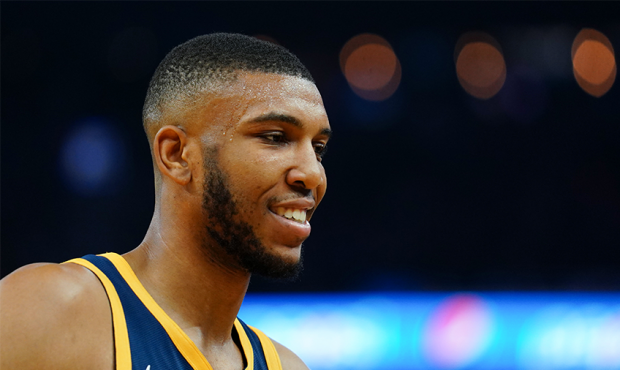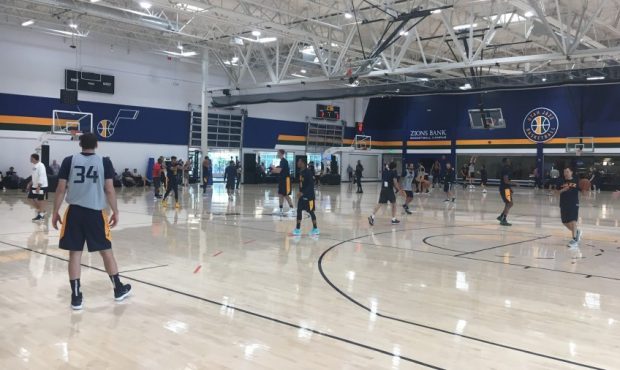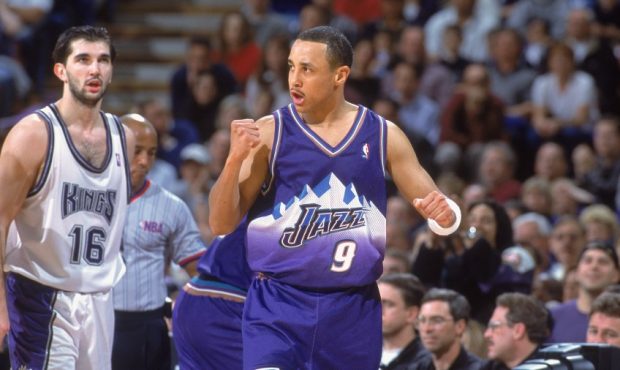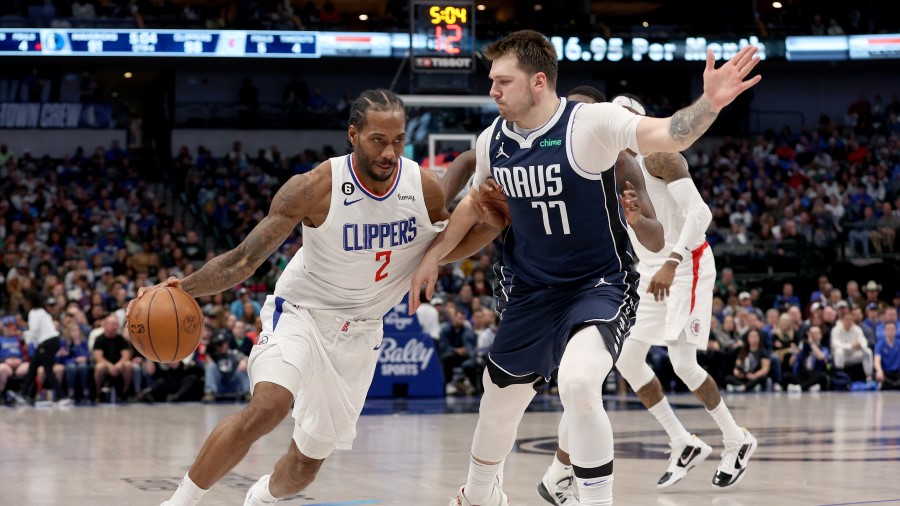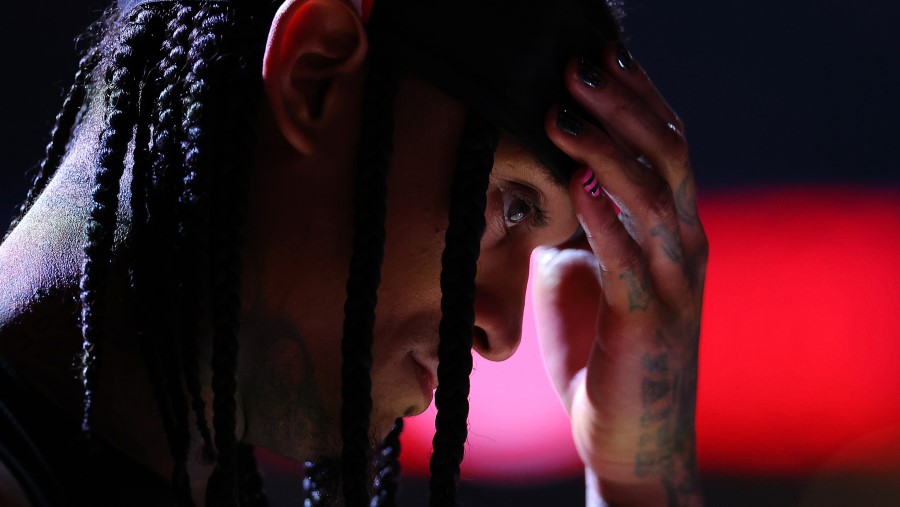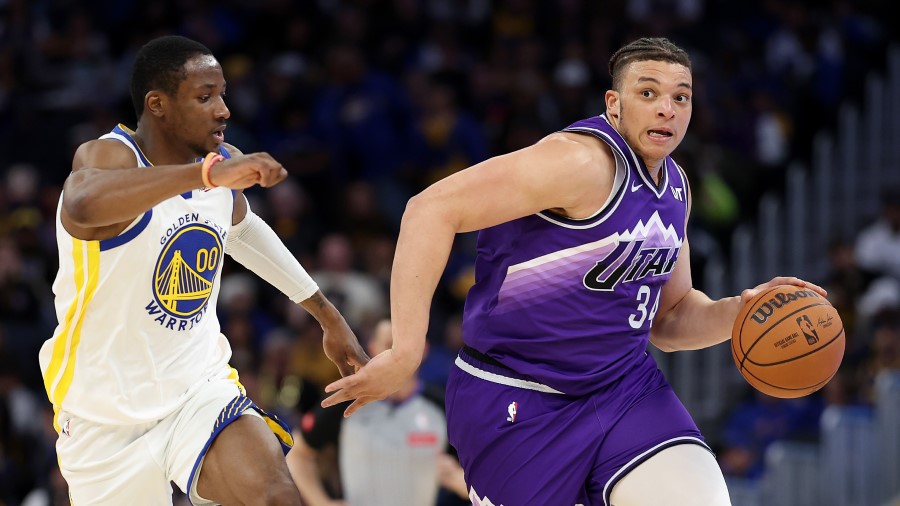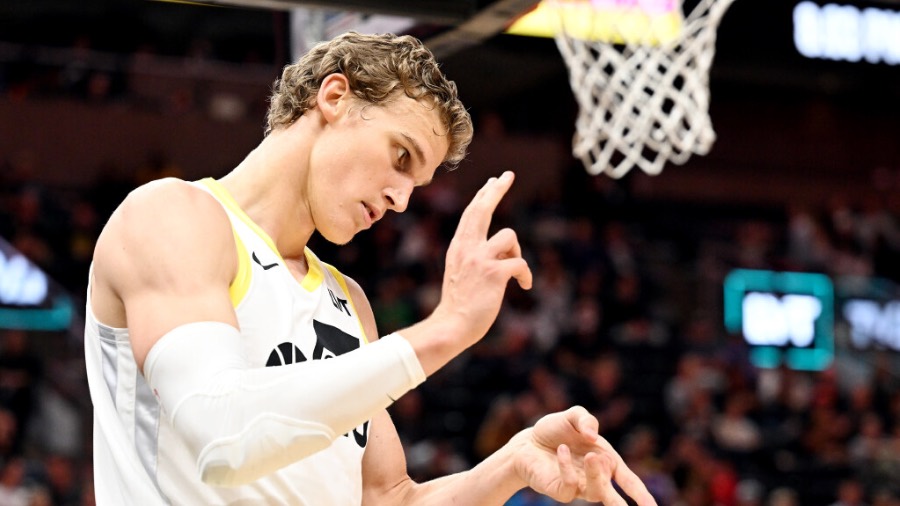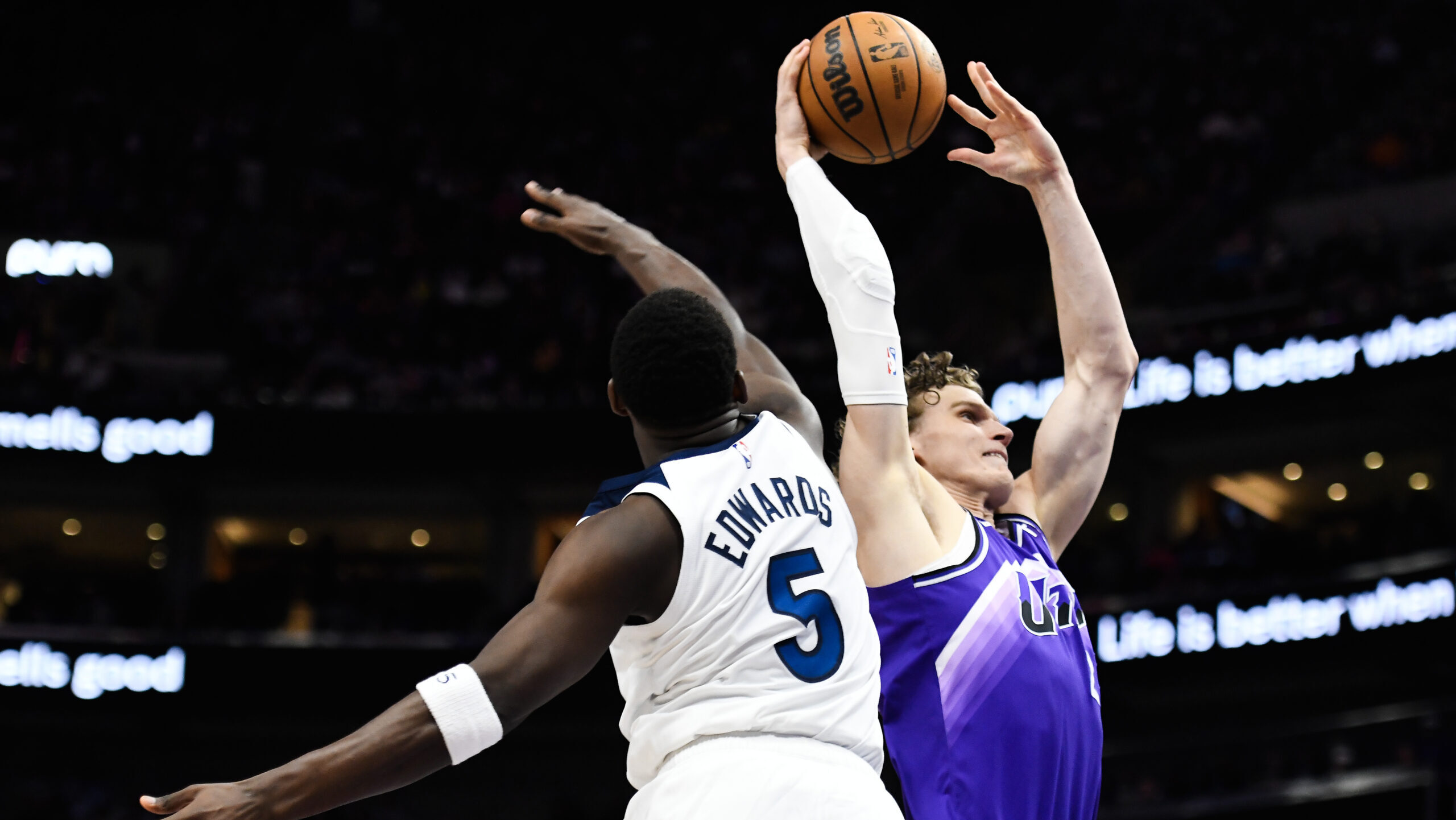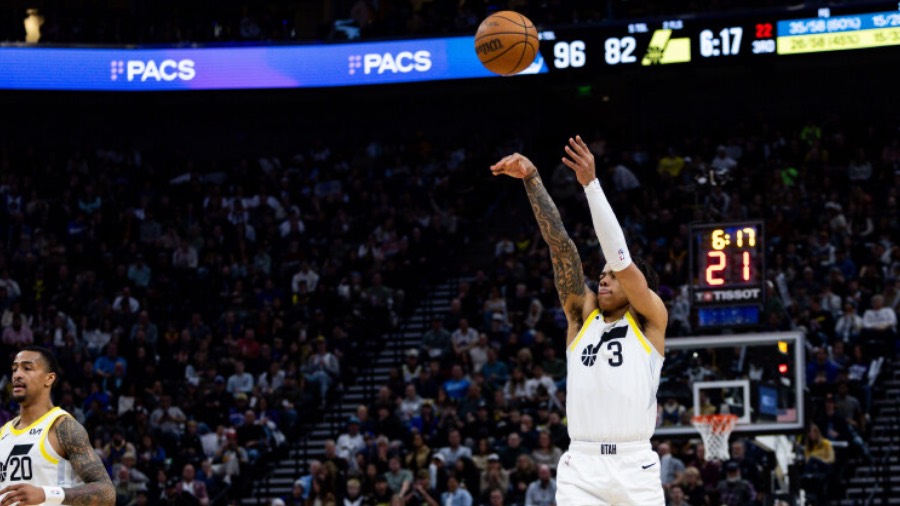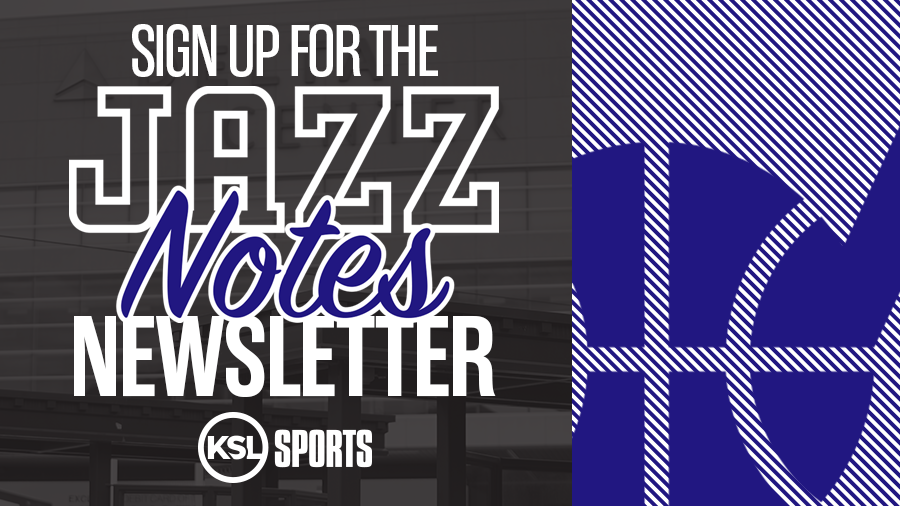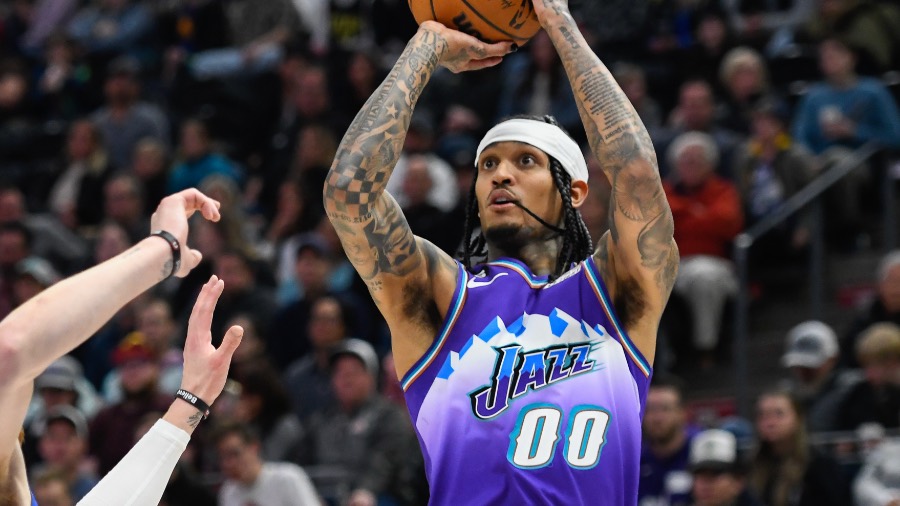Recasting “The Last Dance” Utah Jazz Roster
May 11, 2020, 6:28 PM | Updated: 6:28 pm
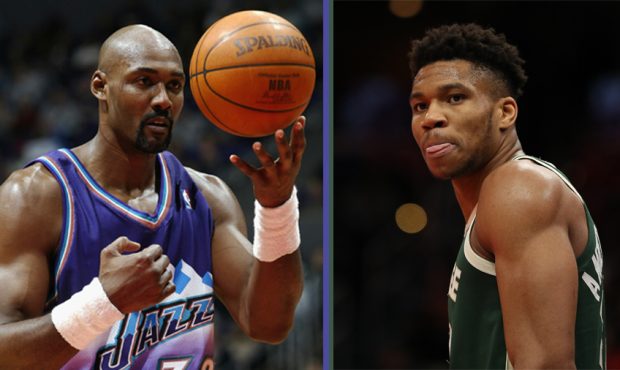
Karl Malone (Photo by Robert Laberge/Getty Images) next to Giannis Antetokounmpo (Photo by Patrick Smith/Getty Images)
(Photo by Patrick Smith/Getty Images)
SALT LAKE CITY, Utah – Separating mythology from truth is a difficult process. It’s even more challenging when nostalgia is involved. I’ve noticed this when watching ESPN’s “The Dance Dance” chronicling Michael Jordan’s final season with the Chicago Bulls. It’s hard to decipher how great Jordan was, especially compared to his competition. Understanding he went a perfect six for six in Finals appearances. all of Jordan’s counterparts simply feel inferior. Thus, I’ve taken up recasting “The Last Dance” Utah Jazz Roster with modern NBA players.
My hope is to better understand how good the Jazz were in the mid to late ’90s. Then, by doing this, I hope to better understand Jordan’s already established excellence.
The Rules
There are ground rules involved. First, comparing players within eras is a difficult task. Even during the ’90s, there was only one Karl Malone. Even if Larry Johnson was supposed to overtake Malone’s throne, he never did. His playing style was different.
It’s even more difficult to do in different eras. Karl Malone doesn’t exist in this era. There simply isn’t a back to the basket power forward that dominates the NBA anymore. It’s not how the game is played. Additionally, no player is as reliant on mid-range jump shots anymore. Malone made a living as a pick and pop specialist. Today, he would spend more time at the three-point line. The forward made just 85 career three-points shots. In comparison, he may have broken his career mark in one season were he playing today.
John Stockton | Karl Malone | Jeff Hornacek | Bryon Russell | Greg Ostertag@utahjazz 😍😍😍 pic.twitter.com/wpLGKL1LJd
— NBA Spain (@NBAspain) August 11, 2019
So, we must look at the overall impact. Malone was a two time MVP, what other players in the league most closely resemble those accolades at this point in the league. Beyond the style of play, a player’s importance within the league is a better measure of their overall effectiveness.
Second, it’s important to not blur our perspective of retired players as opposed to who they were when they were on the floor. It’s easy to encapsulate Malone as a two-time MVP, 14-time All-Star, and 14-time All-NBA member. Even though Malone had already been named one of the 50 greatest players in NBA history by the time the Jazz faced the Bulls, his legacy was far from complete.
Thus, these comparisons aren’t a projection of who these modern players will become. Instead, it’s a comparison of who the Jazz players were at the time, versus who they would be today.
Recasting “The Last Dance” Utah Jazz Roster
Karl Malone – PF: 27 ppg, 10.3 rpg, 3.9 apg
Comparison – Giannis Antetokounmpo: 29.6 ppg, 13.7 rpg, 5.8 apg
Coming off his first MVP season, the Jazz were able to secure the best regular-season record in the NBA. The Jazz had lost to Jordan’s Bulls the season before but were able to repeat as Western Conference Champions before falling to Chicago in six games. Malone was the best player in the West and the third-leading scorer in the NBA.
May 10, 1998: After going 6 of 21 in a 86-64 Game 3 loss, Karl Malone bounced back with 34 points in a 82-73 win over the Spurs in Game 4. The Jazz took a 3-1 lead back to Salt Lake City. #KSLSportsArchive #takenote #NBA pic.twitter.com/NJr4HbHpdC
— Jeremiah Jensen (@JJSportsBeat) May 11, 2020
Like Malone, Giannis Anteokounmpo is fresh off an MVP season, despite a disappointing elimination at the hands of the future champion Toronto Raptors. Antetokounmpo is universally regarded as the best player in the East, if not the best player in the NBA. Coincidentally, the greek forward, like Malone, is the league’s third-leading scorer.
Stylistically, the two aren’t terribly similar. Antetokounmpo is more of a point forward, while Malone plays more like Detroit Pistons forward Blake Griffin. However, their impact on the floor is similar, and both players brought their teams to the precipice of Finals glory.
John Stockton – PG: 12 ppg, 2.6 rpg, 8.5 apg
Comparison – Chris Paul: 17.7 ppg, 4.9 rpg, 6.8 apg.
This may be the most obvious comparison of any two retro and modern players on the roster. Both guards were assist dynamos in their prime who likely should have assumed bigger scoring roles of their teams. While neither player has an imposing build, all they did was find ways to help their teams win every time they suited up.
By 1998, John Stockton was clearly past his prime athletically but had mastered his role as a floor general. Additionally, it was the first season the guard had failed to get elected to the All-Star game after nine consecutive appearances. Stockton would again get the nod in the year 2000. The Jazz guard was in his 14th season in the NBA, was still a major contributor at the highest level.
May 7, 1998: John Stockton had 18 points and 12 assists and Antoine Carr and Bryon Russell combined for 31 points off the bench helping the @utahjazz grind out a 109-106 OT win over the Spurs in Game 2. #KSLSportsArchive #NBA pic.twitter.com/jPLIMf5Myd
— Jeremiah Jensen (@JJSportsBeat) May 7, 2020
Likewise, Paul has lost a step from his prime. Though he’s assumed a bigger role with the Oklahoma City Thunder, the guard is entering the twilight of his career. Now in his 15th year, Paul is relied more upon for his steadiness, however, he’s still a threat to win a game with his efficient perimeter scoring.
At this point in their careers, both Stockton and Paul were both first-ballot Hall of Fame locks. However, a championship ring still eluded them.
Jeff Hornacek – SG: 14.2 ppg, 3.4 rpg, 4.4 apg
Comparison – JJ Redick: 14.9 ppg, 2.6 rpg, 2.0 apg
Jeff Hornacek may be the most compatible player from “The Last Dance” era Jazz to the modern game. Hornacek was a deadly three-point shooter, a combo guard, with a savvy veteran presence.
In that sense, Hornacek draws comparisons to players like Seth Curry, CJ McCollum, and Bogdan Bogdanovic. However, due to his age at the time (34-years-old), and his diminishing athleticism, JJ Redick gets the nod.
🔥 JJ Redick Breaking Ankles! pic.twitter.com/UiJ3aOM7YZ
— Ballislife.com (@Ballislife) April 18, 2020
Make no mistake, Hornacek was a playmaker than Redick ever has been. However, his greatest threat was his dead-eye three-point shooting. Additionally, both players were better than advertised defensive players.
While Hornacek did receive one career All-Star nod, he was more widely regarded as a top their supporting scorer, and a top 100 player. Redick can be described the same way and earns the nod as Hornacek’s modern counterpart.
Bryon Russell – SF: 9 ppg, 4 rpg, 1.2 apg
Comparison – OG Anunoby: 10.7 ppg, 5.4 rpg, 1.6 apg
Bryon Russell held the unfortunate responsibility of guarding the opposing team’s best wing scorer. Hence, when Jordan scored the final basket of his Bulls career, it was Russell who was forever immortalized by the legendary ‘push off ‘ basket.
However, Rusell was good, though not an elite athlete. He gave the Jazz much needed rebounding alongside Malone, and was a respectable three-point shooter at 34 percent, good for 57th best in the league.
Watch OG Anunoby's best plays from the Raptors' win in Utah last night 🦖🇬🇧 pic.twitter.com/BNremqGOlI
— NBA UK (@NBAUK) March 10, 2020
Likewise, Anunoby is a supporting player on the Raptors who brings length and athleticism to the defensive end of the floor. The third-year forward scores mostly in transition and with open three-point shots. Coincidentally, Anunoby is the 56th best three-point shooter in the game.
Adam Keefe: – C: 7.8 ppg, 5.5 rpg, 1.1 apg
Comparison – Dwight Powell: 9.4 ppg, 5.7 rpg, 1.5 apg
The Jazz looked to find an adequate frontcourt mate for Malone through his career. Mark Eaton, Felton Spencer, Isaac Austin, and Greg Ostertag all held the role for stretches. However, with Ostertag’s growing inconsistency, the Jazz turned to Adam Keefe to provide energy and smarts alongside Malone in 1998.
Keefe played all three frontcourt positions, competing with Russell, Malone, and Ostertag for playing time. Eventually, he’d move into a full time starting position alongside Malone on the team’s second Finals run.
Likewise, Powell is a nontraditional center who earns his living doing the dirty work alongside Luka Doncic and Kristaps Porzingis in Dallas. Both players are borderline NBA starters who aren’t asked to carry an enormous load on either side of the ball.
Howard Eisley – PG: 7.7 ppg, 2 rpg, 4.2 apg
Comparison – Aaron Holiday: 9.4 ppg, 2.3 rpg, 3.3 apg
By his fourth season in the NBA, Eisley had turned into one of the league’s most steady back up point guards. Eisley was the team’s sixth man and an efficient scorer off the bench. With Eisley’s growing reputation, it was only a matter of time that teams would seek him out as their future starting guard.
Aaron Holiday lines one up from deep! #NBARooks #NBAPreseason
WATCH on ESPN pic.twitter.com/8qiByX9dVr
— NBA (@NBA) October 11, 2018
Likewise, Indiana Pacers guard Aaron Holiday has earned that same reputation. In his second season, Holiday has proven to be a quality back up guard for the superior Malcolm Brogdon. The former UCLA Bruin is a strong three-point shooter which like Eisley, aids his overall efficiency.
On his current trajectory, Holiday is a candidate to be a steady starter in the near future. But, for now, he remains a reserve guard.
Shandon Anderson- SG: 8.3 ppg, 2.8 rpg, 1.1 apg
Comparison – Pat Connaughton: 5.1 ppg, 4.2 rpg, 1.6 apg
Shandon Anderson was a surprise contributor for the Jazz in just his second season. The shooting guard teamed with Eisley to form a formidable, albeit young backcourt for the contenders. Though an inconsistent shooter, Anderson was effective at the rim due to his upper echelon athleticism, and moderate playmaking skills.
Dunk of the Night: Dec. 27th
👉 Pat Connaughton of the @Bucks pic.twitter.com/Jm011BdxQl
— NBA Canada (@NBACanada) December 28, 2019
Similarly, Connaughton is a mediocre shooter who has found a way to impact games in a reserve role. The fifth-year guard is an elite athlete that displays occasional playmaking acumen. Connaughton is aided by a steady backup point guard in George Hill.
Greg Foster – C: 5.7 ppg, 3.5 rpg, .7 apg
Comparison – Khem Birch: 3.8 ppg, 4.5 rpg, .9 apg
Greg Foster proved to be a valuable big man in the Jazz rotation, regularly rating with Keefe and Antoine Carr in the team’s starting lineup. Foster was largely the team’s fourth big behind Malone, Keefe, and Carr, but brought hustle to the team’s second unit.
Like Foster, Birch was called upon to be a starter for the Orlando Magic this season in spot situations. Birch likely isn’t a long term starter, but he may spend a decade in the NBA as a role player. Like Foster, Birch is a mostly average back up big man who could find a spot on most rosters in the NBA.
Greg Ostertag – C: 4.7 ppg, 5.9 rpg, 0.5 apg
Comparison – Willie Cauley-Stein: 7.2 ppg, 5.8 rpg, 1.3 apg
Perhaps the most difficult player from the Jazz roster to compare is Greg Ostertag. The lumbering big who existed mostly to defend Shaquille O’Neale a few times a season simply doesn’t exist in today’s NBA. However, Ostertag was a mediocre reserve center that flashed sequences of potential. Overall, the Jazz big man’s lack of commitment robbed him, and the team of what could have been a high ceiling.
That same game in 2004 featured a fight between Greg Ostertag and Zydrunas Ilgauskas #CLEatUTA #utahjazz #cavs pic.twitter.com/IvEWi7RqFJ
— Jeremiah Jensen (@JJSportsBeat) January 10, 2017
Similarly, Willie Cauley-Stein has the makings of a modern NBA big man but provides little in the way of winning. The big man flashes potential of a starting center in the league but too often fades into obscurity. Both players are adequate shot blockers and rebounders but don’t add much else.
Antoine Carr – C: 5.7 ppg, 2 rpg, .7 apg
Comparison – Nene: 3.6 ppg, 2.9 rpg, .6 apg
By this point in his career, age and injuries were taking a toll on ‘The Big Dog’ Antoine Carr. The formerly formidable frontcourt big man was nearing the end of his career, and his consistency waned through the year. Still, Carr was a fan favorite and accepted his role off the bench under coach Jerry Sloan.
May 6, 1997: Antoine Carr made two free throws with 2 seconds left, his only points of the game, and the @utahjazz held off the Lakers in Game 2 of the 1997 Western Conference Semifinals 103-101 #KSLSportsArchive #takenote #NBA pic.twitter.com/hVS2jjhmNh
— Jeremiah Jensen (@JJSportsBeat) May 7, 2020
Comparatively, Nene is likely in the final few seasons of his once impressive career. Though neither player was an imposing rebounded, they were skilled offensive players with immense strength down low. Nene failed to appear in a game in the 2019-20 NBA season.
Chris Morris – SF: 4.3 ppg, 2.1 rpg, .4 apg
Comparison – Shaquille Harrison: 4.9 ppg, 2.0 rpg, 1.1 apg
At this point in his career, Morris had deteriorated from a highly productive starter in the NBA to merely an end of the bench forward who saw sporadic minutes. In concept, Morris was an ideal fit for the Jazz, but couldn’t earn minutes ahead of Russell, Keefe, or Anderson.
Likewise, Harrison has the makings of an NBA player but has struggled to earn consistent minutes for the Bulls in his third NBA season. Both players are only mediocre contributors at this point in their careers and are fighting to earn one of the last roster spots on the team.
Jacque Vaughan – PG: 3.1 ppg, .8 rpg, 1.9 apg
Comparison – Tremont Waters: 3.3 ppg, .9 rpg, 1.2 apg
With Stockton sidelined by an injury to begin the season, rookie Jacque Vaughan stepped in behind Eisley to provide surprisingly solid point guard minutes. However, once Stockton returned, Vaughan mostly filled in garbage minutes for the team.
Similarly, Waters is mostly a third point guard for a good team in the Boston Celtics but mostly sees garbage minutes as a rookie.
In retrospect, would this recasting of the “The Last Dance” Utah Jazz roster finally the NBA championship in Utah? Or would they destined to come up short like the great Jazz teams of the past?

